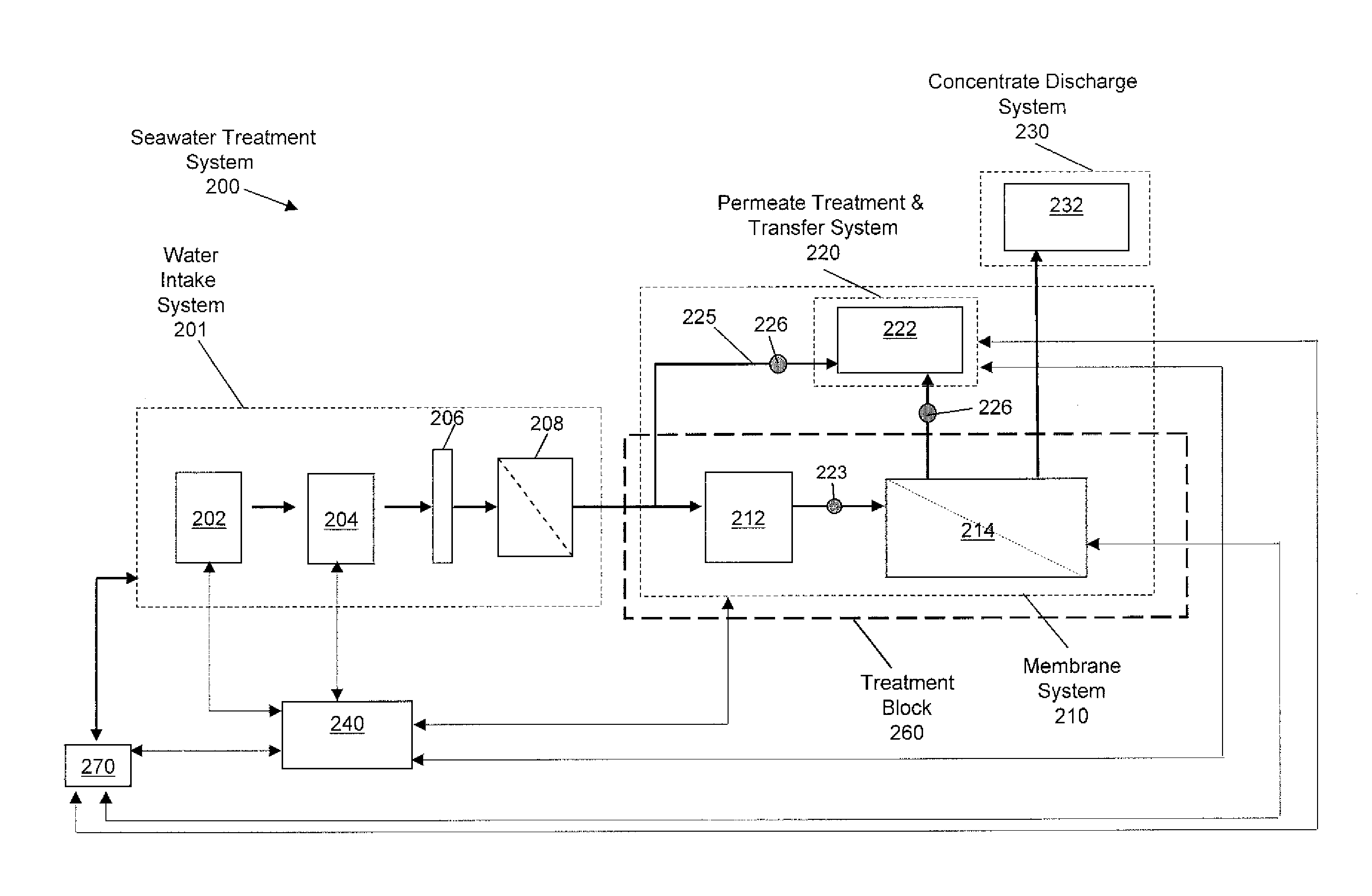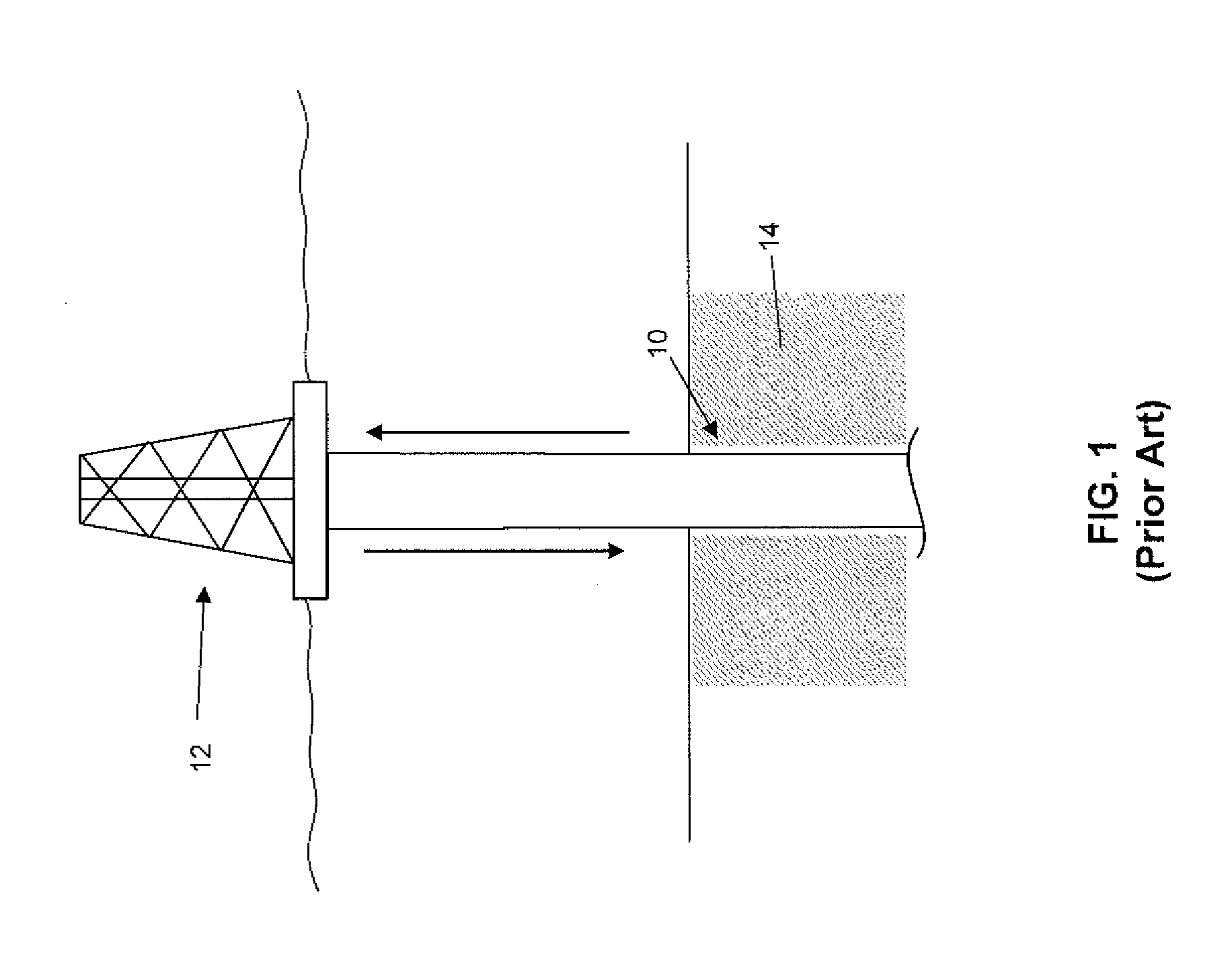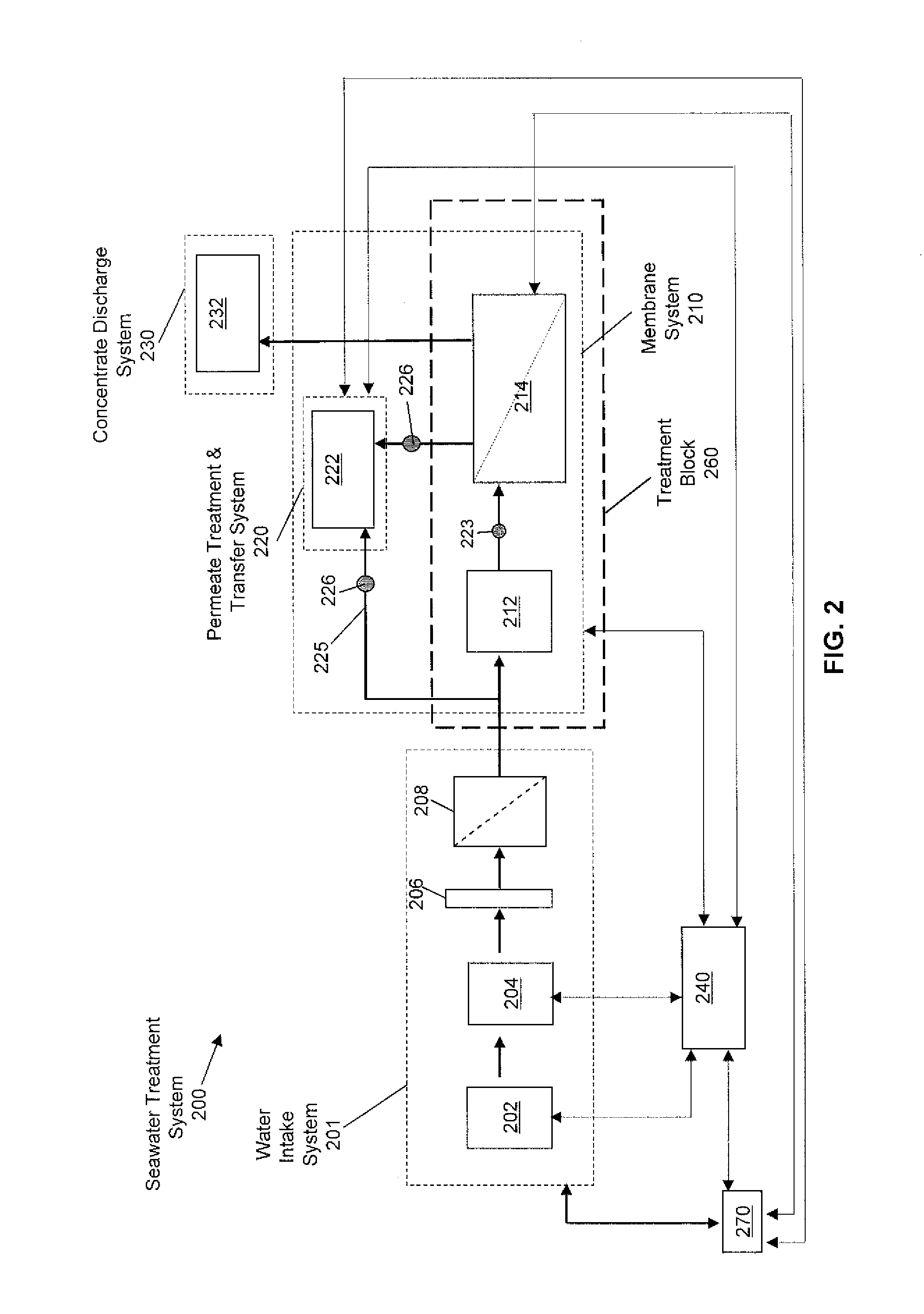Method and control devices for production of consistent water quality from membrane-based water treatment for use in improved hydrocarbon recovery operations
a technology of water treatment and control devices, which is applied in the direction of treatment water, membranes, borehole/well accessories, etc., can solve the problems of reducing the permeability of the reservoir, reducing the amount or quality of the hydrocarbon product produced from the production wells, and difficulty in some locations in disposing of produced water offshor
- Summary
- Abstract
- Description
- Claims
- Application Information
AI Technical Summary
Benefits of technology
Problems solved by technology
Method used
Image
Examples
example 1
[0112]A system comprised of a treatment block of seawater reverse osmosis membranes and a treatment block of seawater nanofiltration membranes is configured such that the flowrates to each treatment block and the respective high-pressure pump to each block can be regulated. The treatment block is comprised such that it produces approximately 60% of the permeate flow using the nanofiltration block operating at 42% recovery and 40% of the permeate flow using the reverse osmosis block operating at 40% recovery. In this example, the specific (target) salinity (total dissolved solids) of the blended permeate is 2,900 mg / L (+ / −100 mg / L) and the maximum allowable hardness is 60 mg / L (as defined by the combined calcium and hardness ion concentration, in mg / L). The operating range of the system is 25 to 30° C.
[0113]Exhibit 1 provides the natural deviation of the salinity and hardness of a conventional system, comprised of 60% nanofiltration and 40% reverse osmosis, over the temperature range...
example 2
[0117]A system comprised of a treatment block of seawater reverse osmosis membranes and a by-pass stream treatment block of seawater nanofiltration membranes is configured such that the flowrates to each treatment block and the respective high-pressure pump to each block can be regulated. The treatment block is comprised such that it produces approximately 92.8% of the permeate flow using the seawater reverse osmosis membrane block operating at 45% recovery and the remaining permeate flow using a slipstream of permeate from a multi-pass nanofiltration membrane block operating at 75%, 80% and 80% recovery, respectively, for the three-pass system. In this example, the specific (target) salinity (total dissolved solids) of the blended permeate is 2,000 mg / L (+ / −50 mg / L) and the maximum allowable calcium is 10 mg / L, the maximum allowable magnesium is 10 mg / L, and the maximum allowable sulfate is 10 mg / L. The operating range of the system is 22 to 31° C.
[0118]Exhibit 3 provides the natur...
PUM
| Property | Measurement | Unit |
|---|---|---|
| concentration | aaaaa | aaaaa |
| concentration | aaaaa | aaaaa |
| diameter | aaaaa | aaaaa |
Abstract
Description
Claims
Application Information
 Login to View More
Login to View More - R&D
- Intellectual Property
- Life Sciences
- Materials
- Tech Scout
- Unparalleled Data Quality
- Higher Quality Content
- 60% Fewer Hallucinations
Browse by: Latest US Patents, China's latest patents, Technical Efficacy Thesaurus, Application Domain, Technology Topic, Popular Technical Reports.
© 2025 PatSnap. All rights reserved.Legal|Privacy policy|Modern Slavery Act Transparency Statement|Sitemap|About US| Contact US: help@patsnap.com



